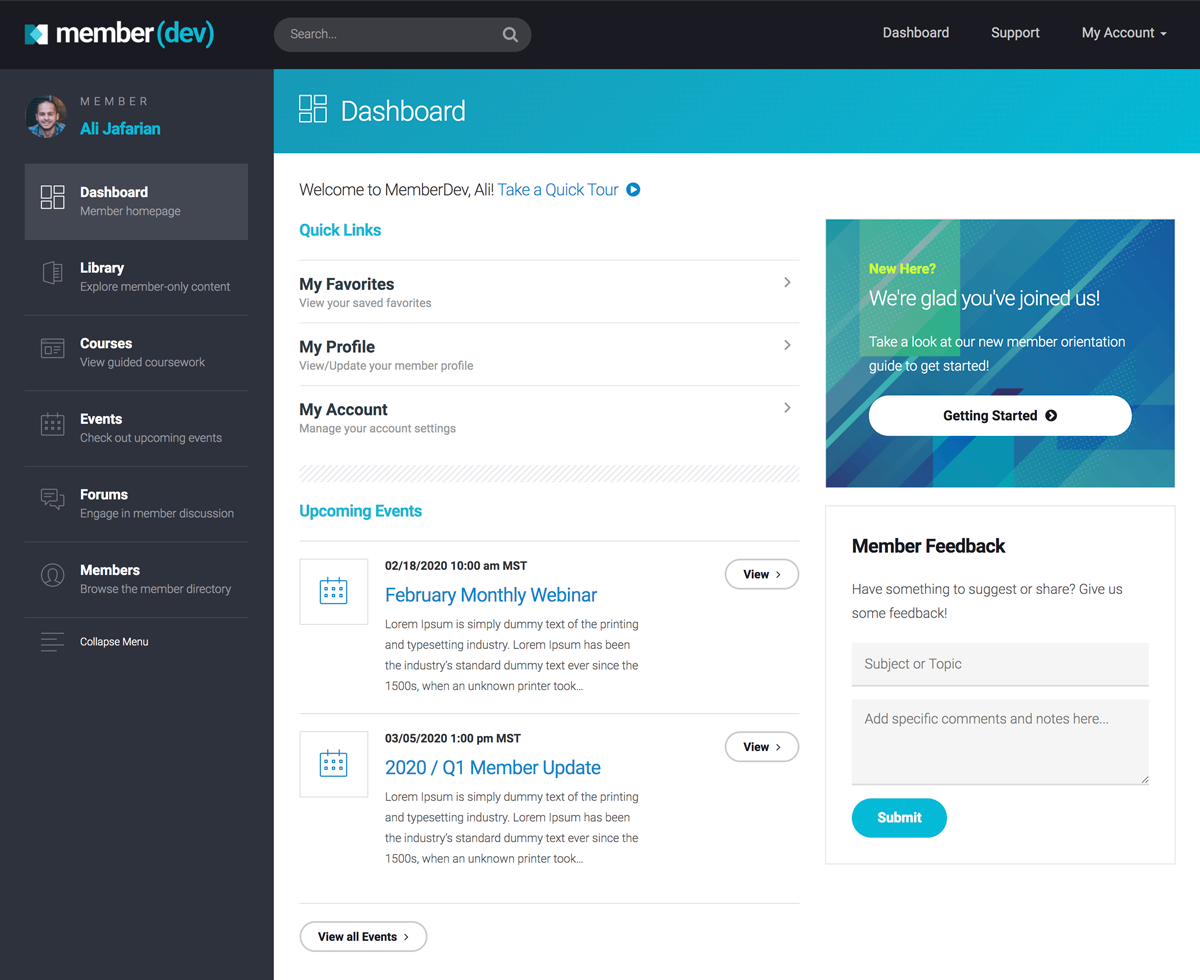We’ve been working with a lot of startups and early stage businesses lately, so we thought it’d be helpful to write an article on some key metrics.
For starters, by “membership website” we’re simply referring to any online business that drives revenue through paid subscriptions – i.e. users pay you a monthly/annual fee to subscribe to your site.
Now that we have context let’s talk about 2 key metrics for any membership site.
1) Customer Lifetime Value
The first metric is customer lifetime value (CLV). This is a fancy way of saying “how much is a member worth to my business.” In other words, what’s the average CLV for a member of my site?
For example, let’s say you run a fitness website where you offer online fitness classes. Your monthly membership is $10/month. You will have some members who last 1 month, in which case their CLV is $10. And then you’ll have other members who last 3 months, in which case their CLV is $30. To find your true CLV, you need to take an average of all your members. That math will vary depending on your price points, but the general math is below.
1) First, find your member CLV:
[membership price] x [months as a member] = member CLV
2) Next, add up all your member CLV values:
member 1 CLV + member 2 CLV + member 3 CLV … = total CLV
3) Then, to find true CLV take your total CLV and divide it by your number of members:
[total CLV] / [number of members] = true CLV
CLV is critical because it gives you some insight into what your product or service is really worth. If you have a low CLV it’s probably an indication that your offering is not very valuable… Whereas a high CLV might suggest that you have something worth paying for.
Either way, every membership site should know their CLV so that they can get a sense of how valuable their offering is, and subsequently optimize their price points. Finding the right price point for your product/service will help you accelerate and maximize ROI.
Real World Example
One of my businesses is an online yoga site, where we offer our members access to online yoga video classes. We played with different monthly membership price points – $12 vs. $9 – and found that our CLV was greater with the $9 price point. If we didn’t care about CLV we would still be stuck at $12/month generating less revenue – case in point.
2) Customer Acquisition Cost
The second metric is customer acquisition cost (CAC). This is a fancy way of saying “how much does a new member cost my business.” In other words, how much do we spend to acquire a new member?
Finding your CAC can be a bit more difficult… especially if you have multiple marketing and/or advertising channels. However, knowing your CAC is critical to building a sustainable business. For example, if you only advertise on Facebook and spend $10/day, which yields 2 new members/day, your CAC is $5/member.
To find your total CAC for any time period you need to do the following:
1) First, add up all the expenses related to new member acquisition:
Facebook spend + Google Adwords spend + email marketing spend = total spend
2) Then, divide that number by the total members acquired during that time period:
total spend / [number of members acquired] = total CAC
I know my CLV and CAC – Now what???
If you can get a good read on your CLV and CAC the rest is just optimization.
To optimize CLV we want to figure out ways to increase that number. That can be done via:
- New site features
- Higher user engagement
- Better content/offering
- etc.
To optimize CAC we want to figure out ways to decrease that number. That can be done via:
- More targeted ad spend
- Organic SEO
- Referral marketing
- etc.
Building a membership site is NOT easy. It takes time to build a valuable offering, and it takes effort to keep members engaged. Very rarely can you just throw up a site, upload some videos, and watch the members roll in. That said, knowing your CLV and CAC will help you operate a lot smarter along the way.
Please respond below with any feedback from your own experiences!
Image credit: Aaron Burden




